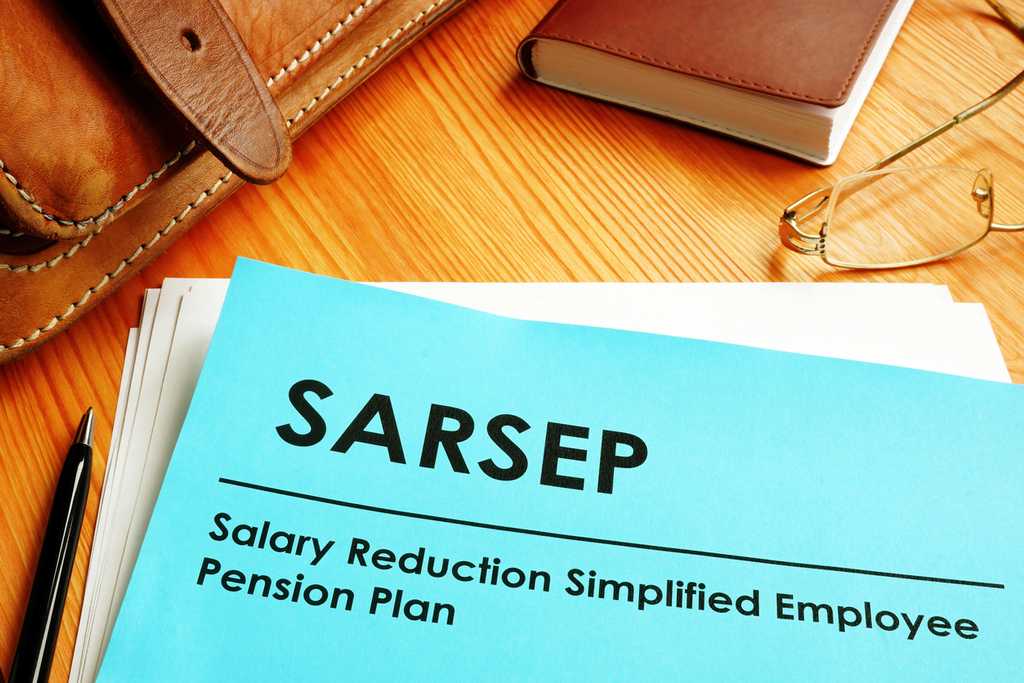SARSEP stands for Salary Reduction Simplified Employee Pension Plan. They are small business retirement plans. The introduction of new SARSEPs was prohibited after December 31, 1996. Plans in existence prior to that can continue and new employees to the company can participate as well.
What is a SARSEP?
A SARSEP is a type of SEP-IRA that allows for contributions via employee salary reductions into an IRA account. SARSEPs also allow for employer contributions into an IRA account for the employees, much like employer contributions to a SEP-IRA.
The IRS defines a SARSEP as:
- A SEP (Simplified Employee Pension) plan that was put into place prior to January 1, 1997.
- The plan must permit employee salary reduction contributions.
- Plans must meet minimum participation levels each year.
- At least 50% of the eligible employees must elect to make salary reduction contributions each year.
- The plan cannot have more than 25 employees who were eligible to participate in the prior year.
- The plan may need to be amended for any current changes in the rules.
According to IRS rules, employees, including someone who is self-employed, are eligible to contribute to a SARSEP if they meet these criteria:
- The employee has reached age 21.
- They have worked for the employer for at least three of the past five years.
- The employee has or will receive at least $650 in compensation from the employer during 2022. This number is unchanged from 2021. The compensation amounts were $600 in both 2019 and 2020.
An employer may set less restrictive eligibility requirements than these but may not impose more restrictive requirements.
The Small Business Job Protection Act of 1996 eliminated the creation of new SARSEP plans after the end of 1996. The SARSEP was essentially replaced by the SIMPLE IRA. The SIMPLE IRA can be offered by companies with up to 100 employees and has minimal reporting requirements for employers. However, the SIMPLE IRA contribution limits are lower for both employee contributions and for employer contributions.
What is the maximum contribution to a SARSEP?
The maximum employee contribution is the same as for a 401(k) plan for 2022. Contributions up to $20,500 are allowed, with an extra $6,500 catch-up contribution for those who are age 50 or over at any point during 2022. These are pre-tax traditional IRA contributions, SARSEP Roth accounts are not allowed.
Employer contributions cannot exceed 25% of the employee’s compensation, and total combined employer and employee deferral contributions cannot exceed $61,000 for 2022. This is the same overall limit as with a SEP-IRA plan.
By contrast, the maximum employee contribution for a SIMPLE IRA is $14,000 in 2022, with a $3,000 catch-up contribution limit for those 50 or over.
Can a SARSEP be rolled to an IRA?
According to the IRS, employees may roll their SARSEP balances over to an IRA or other types of retirement plans when leaving the employer offering the plan. Since SARSEPs are essentially traditional IRA accounts, a rollover to a traditional IRA would be fairly seamless.
A rollover to a Roth IRA would entail doing a Roth conversion either directly or by rolling the money to a traditional IRA account and then doing the Roth conversion at the IRA custodian.
In some cases, employees may be able to roll their SARSEP balance over to another employer’s plan such as a 401(k) if they switch jobs. This will depend in large part as to whether the new employer’s plan accepts these types of rollovers.
SARSEP distributions
Just like a traditional IRA, distributions from a SARSEP are taxable at the account holder’s ordinary income tax rate. Distributions taken before the account holder reaches age 59 ½ are generally subject to a 10% penalty on top of any income taxes due. There are some exceptions to this for occurrences such as the death or the disability of the account holder.
SARSEPs are also subject to required minimum distributions (RMDs). The money in the SARSEP would be subject to its own RMD amount and cannot be combined with that of other IRA accounts.
SARSEP considerations
For employers who have a SARSEP in place, here are some things to consider:
- The annual filing requirements with a SARSEP are less rigorous than with other types of retirement plans.
- The annual employee and employer contribution levels are higher than for a SIMPLE IRA.
- Employees are immediately vested in the money in their SARSEP accounts in the plan. This allows the employees to roll not only the assets tied to their own contributions over when leaving the company, but also the contributions to their account that were made by the employer.
- There are no designated Roth account options available with a SARSEP as there are with a 401(k) if the employer decides to offer this option.
- Plan loans cannot be offered with a SARSEP. If the employer wants to offer a plan with this option they will need to change the type of plan offered.
- SARSEPs are not available to companies with more than 25 eligible employees, so if the company is in a growth mode this might not be the right plan for that employer.
From the employee’s perspective, as long as the investments offered by the plan are solid and low cost, there are few if any downsides to a SARSEP.

